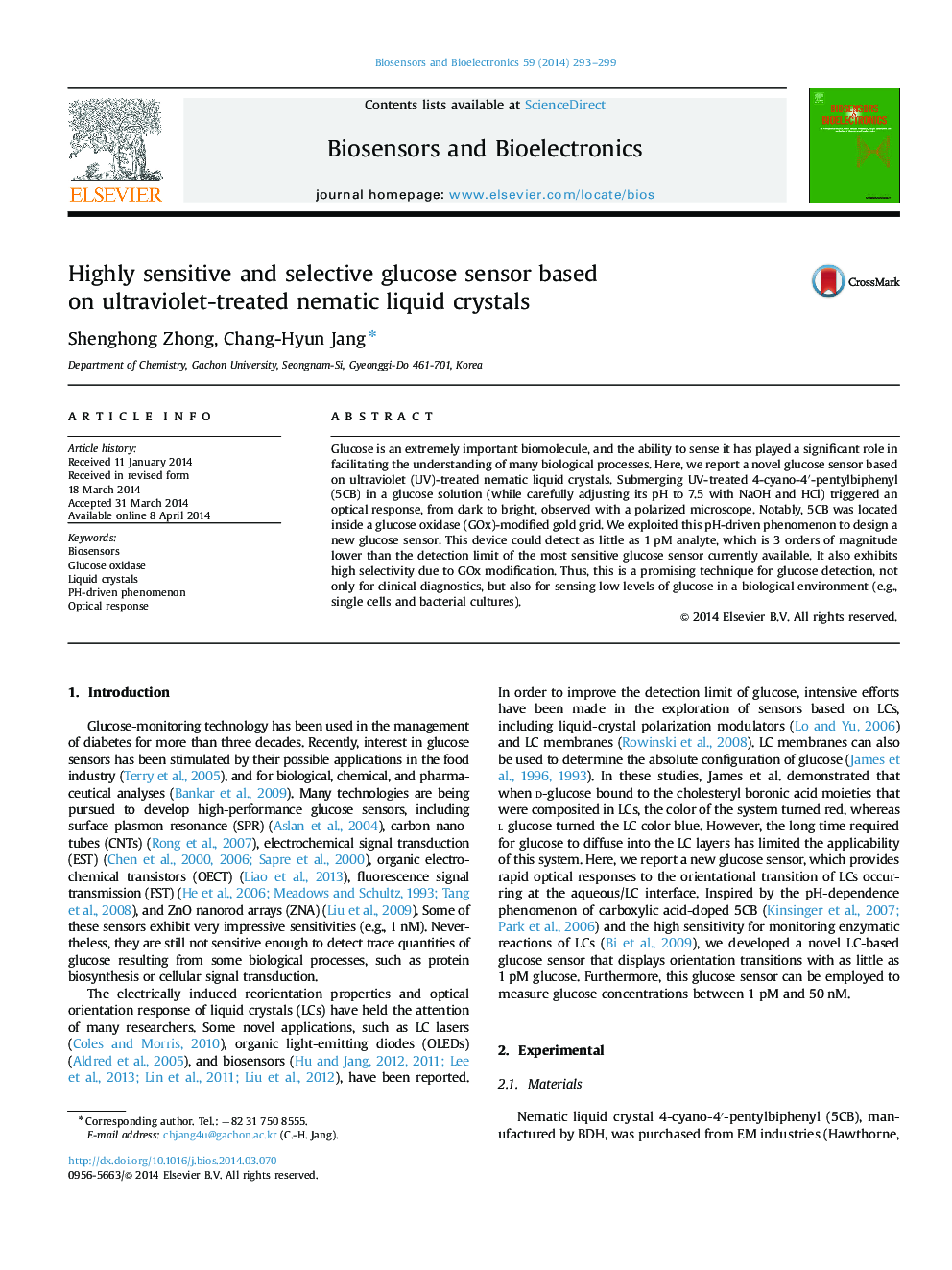| Article ID | Journal | Published Year | Pages | File Type |
|---|---|---|---|---|
| 7233548 | Biosensors and Bioelectronics | 2014 | 7 Pages |
Abstract
Glucose is an extremely important biomolecule, and the ability to sense it has played a significant role in facilitating the understanding of many biological processes. Here, we report a novel glucose sensor based on ultraviolet (UV)-treated nematic liquid crystals. Submerging UV-treated 4-cyano-4â²-pentylbiphenyl (5CB) in a glucose solution (while carefully adjusting its pH to 7.5 with NaOH and HCl) triggered an optical response, from dark to bright, observed with a polarized microscope. Notably, 5CB was located inside a glucose oxidase (GOx)-modified gold grid. We exploited this pH-driven phenomenon to design a new glucose sensor. This device could detect as little as 1Â pM analyte, which is 3 orders of magnitude lower than the detection limit of the most sensitive glucose sensor currently available. It also exhibits high selectivity due to GOx modification. Thus, this is a promising technique for glucose detection, not only for clinical diagnostics, but also for sensing low levels of glucose in a biological environment (e.g., single cells and bacterial cultures).
Related Topics
Physical Sciences and Engineering
Chemistry
Analytical Chemistry
Authors
Shenghong Zhong, Chang-Hyun Jang,
